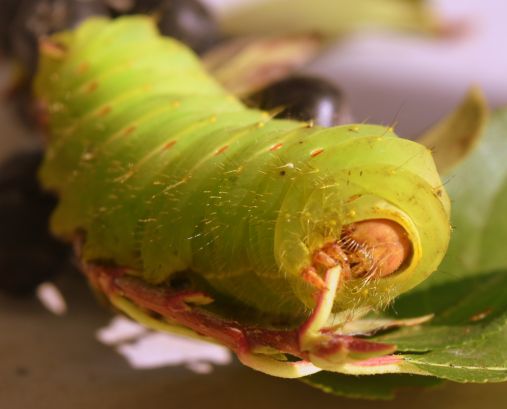2015
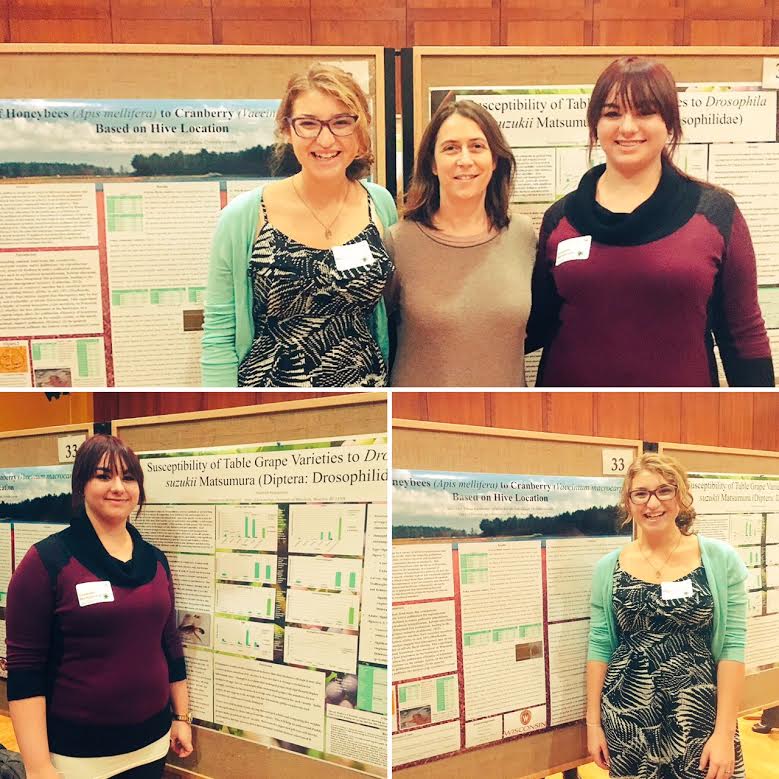
THE 2015 FIELD SEASON IS WRAPPING UP – October 2015
Post by Katie Hietala-Henschell
Our multiple research projects are coming to an end for the season. We started the season early in May to monitor spotted wing drosophila populations (SWD) in raspberry, aronia, and collaborated with monitoring in cherry crops. In June, the hive location pollination study began in cranberry country in central Wisconsin and M.S. student Erin Mcmahan continued her research on host plant resistance in cranberry. In July, we set up a study to assess the species composition of social wasps in vineyards. In addition to the wasp species composition study, we set up an experiment in August to compare different types of baits and lures on social wasps. It has been an exciting successful summer field season and all of the projects have come to the end of the data collection stage except for the persistent SWD. SWD monitoring in raspberry crops will continue into November 2015. Now the fun of processing field samples begins!
Photo taken August 31, 2015 near Oregon, Wisconsin. Polyphemus moth caterpillar found, while checking SWD yeast and sugar traps, on aronia bushes during harvest.
POTENTIAL ALTERNATIVE HOSTS FOR SWD – July 2015
Post by Katie Hietala-Henschell
Spotted wing drosophila (SWD) monitoring is in full swing in raspberry crops around the state. As of July 10th 2015, with the help of collaborators, SWD has been detected in Dane, Burnett, and Pepin Counties in Wisconsin. This year we are also collaborating with aronia growers to gain a better understanding of the impact of SWD on alternative crops. Aronia is a deciduous shrub and is becoming a more common specialty crop in the Midwest. We are using yeast sugar traps to monitor SWD populations.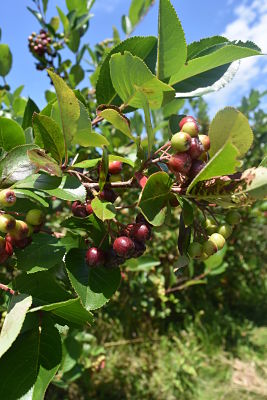
Photo taken in mid-July 2015. Close up of aronia berries starting to ripen – from hard green berries to their deep purplish color.
HIVE PLACEMENT POLLINATION STUDY – June 2015
Post by Katie Hietala-Henschell
Photo taken mid-June 2015 near Warrens, WI. Honeybee hives are brought to cranberry marshes during peak bloom to help pollinate cranberry plants and increase yield.
The Guedot Lab is working with eleven cranberry marshes in Central Wisconsin to study the effect of hive placement on the marsh. Recent graduate, Aidee Guzman, has been leading this study and will look at the pollen from foraging bees. It has been a successful summer using pollen traps and collaborating with growers and bee keepers. Pollen traps were placed at three locations: 1) in the center of the marsh, 2) on the edge of a wooded area, and 3) next to a water reservoir. The bees were very curious when we were out there setting up pollen traps and collecting pollen.
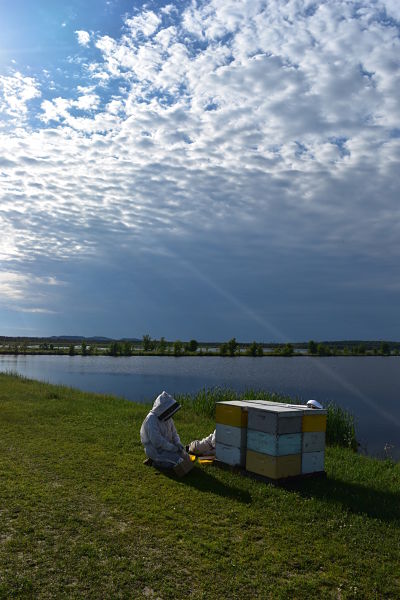
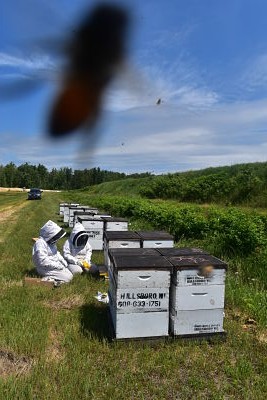
Photos taken in late-June 2015 near Warrens, WI. The photo on the left is an example of the water reservoir location which is one of the three hive locations being studied. The photo on the right shows Hannah Gaines Day and Aidee Guzman collecting pollen from hives located in the center of the marsh and a very curious honey bee that came in for a close up.
THE 2015 FIELD SEASON IS UNDERWAY!
Post by Katie Hietala-Henschell
We are excited for the start of the 2015 field season and have a lot of new and continuing projects. We are continuing our spotted wing drosophila monitoring and overwintering study, currently trapping social wasps in Wisconsin vineyards, busy setting up a pollination study in cranberry country, and have an extensive cranberry host choice lab assay on campus.
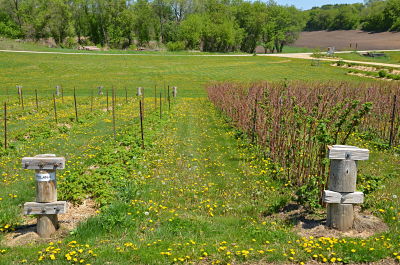 This picture was taken in May 2015 and is a great example of what fall bearing raspberries (on the left hand side) look like when compared to summer bearing raspberries (on the right hand side) early in the season.
This picture was taken in May 2015 and is a great example of what fall bearing raspberries (on the left hand side) look like when compared to summer bearing raspberries (on the right hand side) early in the season.

